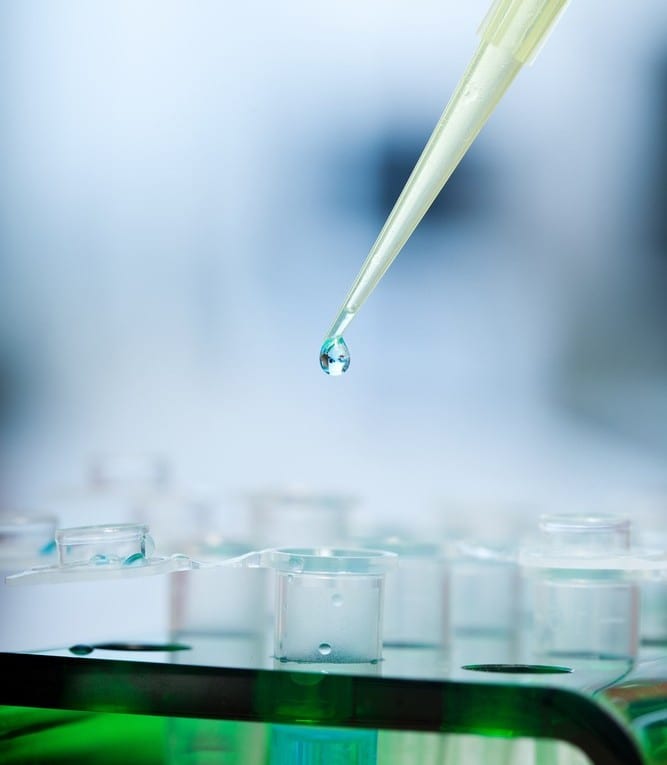Hydrophobic Pipette Tips for Better Release
Problem
Pipettes are widely used by scientists where they need to accurately measure and transfer liquids. Standard pipettes are made of glass but for smaller volumes of liquid, a micropipette is used instead. Micropipettes consist of a mechanical grip section that allows the user to manually set the amount of liquid required. The liquid itself is draw up by suction into a plastic tip which is disposable to avoid cross-contamination between samples. Chemists, biologists and medical staff all rely on micropipettes. For very sensitive samples, hydrophobic pipette tips are used.
The client requested hydrophobic pipette tips to ensure complete release of each liquid sample. They requested an additive to make the tips more hydrophobic. As such tips are typically made of polypropylene (PP), which is already hydrophobic, the options are limited.
The client was particularly concerned about complete release of the liquid and lack of contamination from the plastic tip because they dealt with biological samples such and protein solutions, enzymes and blood. Many common additives for plastics have been found to migrate (move) out of the plastic, so that could not be used for this client.
Action
As mentioned above, the usual low molecular weight, wax type products like stearates or oleamides could dissolve in the water and contaminate the aqueous sample. Furthermore such waxes are not very hydrophobic and take time to arrive at the surface where they must me in order to work properly. Having worked extensively in this area, I was aware of one special additive that would give a lower surface energy and zero contamination. I called a contact of mine and had them send a sample overnight to the client’s production facility in Asia.
Solution
The results of the molding and testing were very encouraging with a clear improvement in performance and a side benefit of the additive was good mold release of the parts. Finally, a way to make hydrophobic pipette tips without resorting to expensive coatings.
See the case studies in the dropdown menus to see other instances where additives and surface modification were used to tune and enhance the properties of plastic materials.
Read more about plastics additives in The Plastics Additive Handbook, 6th Edition

